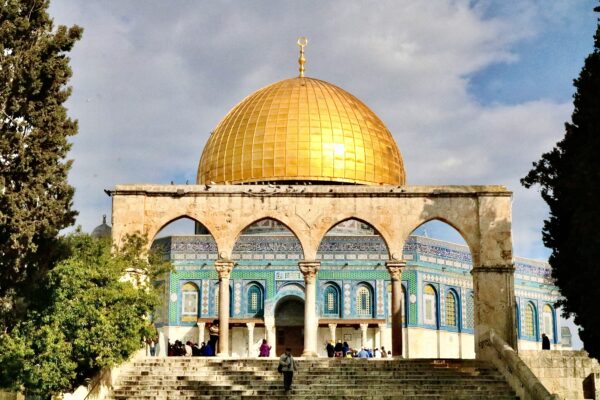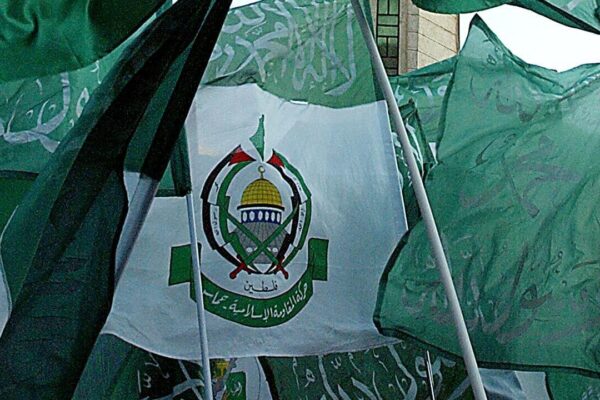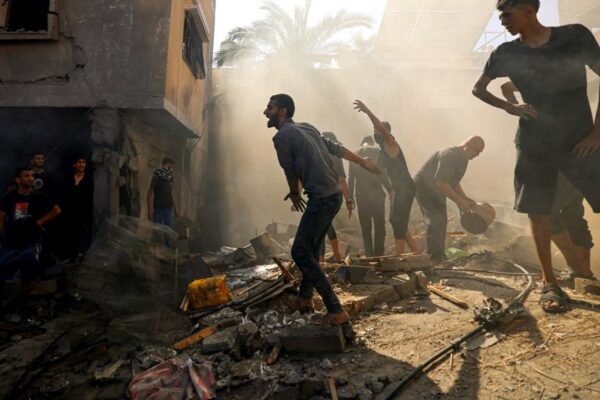Who actually wants peace? Who actually wants the terror to continue?
Who actually wants peace? Who actually wants the terror to continue?
In December 1987, during the early days of the First Intifada, a pivotal moment in the Israeli-Palestinian conflict unfolded:
The charity organization known as the Islamic Collective rebranded itself as Hamas, marking the beginning of its more direct engagement in the conflict.
This shift was not merely in name; it signified Hamas’s intention to play a central role in the struggle for Palestinian self-determination.
In June 1988, just months after its formation, Hamas took a surprising step by offering a peace proposal to Israel.
Mahmoud al-Zahar, one of Hamas’s leaders, traveled to Tel Aviv to present the offer directly to Israeli Defense Minister Yitzhak Rabin.
The proposal was straightforward:
Israel was to declare its intention to withdraw from the Occupied Territories, release Palestinian detainees, and allow Palestinians to appoint representatives for negotiations.
Additionally, Hamas’s founder, Sheikh Ahmed Yassin, expressed a willingness to engage in talks, provided Israel recognized the Palestinian people’s right to self-determination and the right of return.
Despite these overtures, Israel dismissed the proposals. The demands laid out by Hamas were seen as untenable by the Israeli government, which, at the time, was deeply entrenched in its policies of settlement expansion and control over the occupied territories.
From Israel’s perspective, Hamas’s conditions were non-starters, particularly the issues surrounding the right of return and the relinquishment of land.
The period from the early 1980s to the late 1980s saw a significant increase in the settler population in the occupied territories and a corresponding intensification of Israeli military actions against Palestinians.
These actions further fueled the cycle of violence and distrust between the two sides, with Israel viewing Hamas as an uncompromising adversary rather than a potential partner for peace.
As the years progressed, Hamas continued to explore avenues for peace, albeit through different strategies and proposals.
In 1997, a decade after its initial peace offer, Hamas’s leader, Sheikh Yassin, floated the idea of a renewable 10-year truce contingent upon Israel’s complete withdrawal from Gaza, the West Bank, and East Jerusalem.
This proposal was part of a series of offers by Hamas for a long-term truce, often referred to as a “hudna,” which is typically a 10-year agreement in Islamic jurisprudence
However, this proposal, like the one in 1988, was largely ignored by Israel, which continued its policies of land confiscation and settlement expansion.
The early 2000s saw renewed efforts by Hamas to engage in peace talks, with leaders such as Yassin and Abdel Aziz al-Rantissi making public statements about their willingness to accept a Palestinian state based on the pre-1967 borders in exchange for a truce with Israel. Yet, these efforts were met with the same resistance from Israel, which was focused on solidifying its control over the occupied territories rather than pursuing a negotiated settlement.
The failure of these peace initiatives culminated in a tragic turn of events in 2004, when Israel assassinated both Yassin and Rantissi, triggering widespread outrage across the Arab world.
These assassinations not only solidified Hamas’s position as a leading force in Palestinian politics but also galvanized public support for the organization, particularly in Gaza and the West Bank.
The rise in Hamas’s popularity was reflected in the 2006 Palestinian Legislative Council elections, where Hamas emerged victorious, further entrenching its role in the ongoing conflict with Israel.
Despite its electoral success and subsequent attempts to engage in peace talks, including a significant truce agreement in 2008, Hamas’s efforts were repeatedly undermined by Israeli actions, leading to renewed cycles of violence and bloodshed.
The pattern of missed opportunities for peace continued into the 2010s and beyond.
Hamas’s 2017 charter, which called for a Palestinian state along the 1967 borders and the return of refugees, was dismissed by Israel, with Prime Minister Netanyahu’s government labeling it a deceptive ploy.
This cycle of rejection and conflict persisted into the most recent ceasefire talks, where, once again, Israeli actions, including the assassination of Hamas leaders during negotiations, have fueled further violence.
Throughout this history, it becomes clear that while Hamas has made several attempts to reach a political resolution, these efforts have been consistently thwarted by an Israeli policy that prioritizes territorial expansion and military dominance over peace negotiations.
So, this begs the question:
Who actually wants peace?
Who actually wants the terror to continue?





